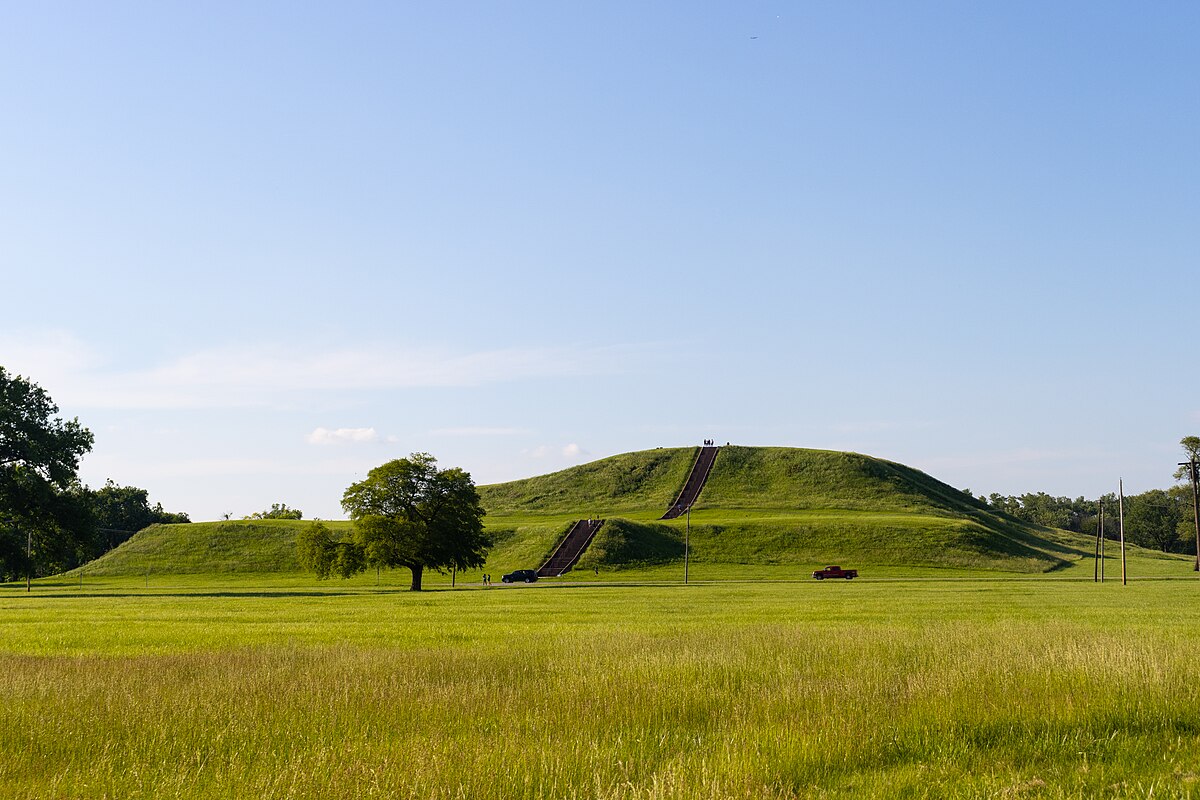The Lost City Of Cahokia: America’s Hidden Metropolis

Ever heard of Cahokia? This ancient city, located near present-day St. Louis, was once the largest and most influential urban center in North America. At its peak around 1100 AD, Cahokia boasted a population of up to 20,000 people, rivaling European cities of the same era. The city featured massive earthen mounds, sophisticated agricultural practices, and a complex social structure. Despite its significance, many people remain unaware of Cahokia's rich history. Why did this bustling metropolis decline, and what can we learn from its rise and fall? Let's dive into the mysteries and marvels of Cahokia, America's hidden metropolis.
The Lost City of Cahokia: America's Hidden Metropolis
Cahokia, once a bustling city, now lies in ruins near modern-day St. Louis. This ancient metropolis, thriving between 1050 and 1350 AD, was home to a sophisticated society. Let's explore the key sites that reveal the secrets of Cahokia.
Monks Mound
Monks Mound, the largest earthen structure in North America, stands as a testament to Cahokia's engineering prowess. This massive mound served as the city's central hub.
- Monks Mound: Rising 100 feet high, this mound covers 14 acres. It required moving millions of cubic feet of earth, showcasing the labor and organization of Cahokia's people.
Grand Plaza
Adjacent to Monks Mound, the Grand Plaza was the heart of public life in Cahokia. This vast open space hosted ceremonies, markets, and gatherings.
- Grand Plaza: Spanning 40 acres, the plaza's flat surface was meticulously leveled. It served as a venue for games, festivals, and community events.
Woodhenge
Woodhenge, a circle of wooden posts, functioned as an ancient calendar. It marked solstices and equinoxes, guiding agricultural and ceremonial activities.
- Woodhenge: Consisting of 48 posts, this structure aligned with the sun's movements. It highlights the astronomical knowledge of Cahokia's inhabitants.
Mound 72
Mound 72, a burial site, offers insights into Cahokia's social hierarchy and rituals. Excavations revealed elaborate burials and grave goods.
- Mound 72: This mound contained the remains of a high-status individual, buried with over 250 sacrificial victims. It underscores the complex social and religious practices of Cahokia.
Cahokia's Palisade
The palisade, a defensive wall, encircled the central part of Cahokia. It protected the city from external threats and controlled access.
- Cahokia's Palisade: Stretching nearly two miles, this wooden fortification featured guard towers and gates. It reflects the city's need for security and organization.
Rattlesnake Mound
Rattlesnake Mound, one of the largest ridge-top mounds, played a significant role in Cahokia's mortuary practices. It offers clues about the city's spiritual beliefs.
- Rattlesnake Mound: This mound contained numerous burials, including those of high-ranking individuals. It highlights the importance of ancestor worship in Cahokia's culture.
Cahokia's Residential Areas
Beyond the monumental structures, Cahokia's residential areas reveal everyday life in the city. These neighborhoods housed thousands of people.
- Cahokia's Residential Areas: Excavations uncovered houses, storage pits, and artifacts. They provide a glimpse into the daily routines, diet, and craftsmanship of Cahokia's residents.
Cahokia's Trade Network
Cahokia was a hub of trade, connecting distant regions. Artifacts from across North America have been found at the site, indicating extensive trade networks.
- Cahokia's Trade Network: Items like shells from the Gulf Coast, copper from the Great Lakes, and obsidian from the Rocky Mountains were discovered. This trade network facilitated cultural exchange and economic prosperity.
Cahokia's Decline
Despite its grandeur, Cahokia eventually declined. Environmental changes, resource depletion, and social upheaval likely contributed to its fall.
- Cahokia's Decline: By 1350 AD, the city was largely abandoned. Understanding the factors behind its decline helps us learn from Cahokia's history.
Cahokia's Lasting Impact
Cahokia's story is a reminder of the rich history hidden in plain sight. This ancient city, once bustling with life, offers a glimpse into the ingenuity and culture of its people. The mounds and artifacts left behind tell tales of a complex society with advanced knowledge in agriculture, astronomy, and urban planning. Visiting Cahokia Mounds State Historic Site today allows us to connect with America's past in a tangible way. It's a place where history comes alive, showing us that the roots of civilization in North America run deep. Whether you're a history buff or just curious, Cahokia is a destination worth exploring. Its legacy continues to inspire and educate, reminding us of the incredible achievements of those who came before us. So next time you're planning a trip, consider stepping back in time to discover the wonders of Cahokia.

